Mark Sisson's Blog, page 176
July 15, 2017
Bacon Guacamole with Cheddar Chips
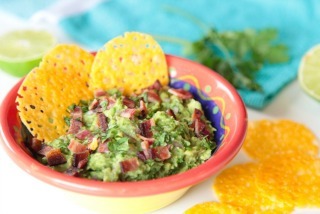 Guacamole is an easy sell. Put a bowl out at a party, and immediately the entire group is hovering over the bowl ready to dip in. So, imagine what might happen when a bowl of bacon guacamole is served. Stand back—this is a flavorful, high-fat snack that people are going to run towards.
Guacamole is an easy sell. Put a bowl out at a party, and immediately the entire group is hovering over the bowl ready to dip in. So, imagine what might happen when a bowl of bacon guacamole is served. Stand back—this is a flavorful, high-fat snack that people are going to run towards.
Basic guacamole doesn’t really need a recipe. In essence, it’s just avocados, lime and salt. However, if your usual go-to has tasted a little ho-hum lately, this recipe will guide you back to an amazing bowl of guacamole. Ripe avocados are mashed with shallot, garlic, cilantro, lots of lime, and yes, bacon. Bacon is the perfect salty, crunchy topper for guacamole.
Speaking of crunchy, eating guacamole with a spoon instead of dipping in a chip just isn’t the same. It doesn’t have to be a corn chip though. This Primal and keto-friendly guacamole is scooped up with chips made out of Cheddar cheese. That’s it…just Cheddar cheese. Grated and baked, the cheese melts into a crispy, salty chip that’s perfect for guacamole. (Don’t do dairy? Then try chicken skin chips.)
Time in the Kitchen: 25 minutes
Servings: 4 to 6
Ingredients

3 cups grated Cheddar cheese (270 g)
2 strips cooked bacon, crumbled
1 teaspoon lime zest (from about ½ a lime) (5 ml)
2 tablespoons lime juice (30 ml)
1 small shallot, finely chopped
1 small garlic clove, pressed
1 jalapeno, finely chopped (optional)
2 tablespoons finely chopped cilantro (30 ml)
¼ teaspoon salt (1.2)
4 ripe avocados
Instructions

Recipe Notes:
Cheddar chips don’t stay crispy long, so make them right before serving the guacamole.
Guacamole usually taste bests chilled, so either refrigerate the avocados for an hour or two before making the guacamole, or press plastic wrap against the surface of the made guacamole to protect it from air (which turns it brown), and chill for several hours before serving.
Preheat oven to 400º F/205º C.
Line a baking sheet with parchment or Silpat.
Drop heaping tablespoons of grated cheddar onto the baking sheet. Space the mounds a few inches apart. You should get approximately 16 mounds. Spread the cheddar mounds out into circles about 2 inches/5 cm wide.
Bake 8 minutes until the cheese is melted and bubbling.
Let the cheese set for a minute until it starts to solidify, then lift the Cheddar rounds off the baking sheet with a spatula. The cheese will quickly cool into “chips.” The Cheddar chips will not be perfectly round; if you want them to be, then use kitchen shears to trim the edges.
Prep all the guacamole ingredients, and have them ready so the guacamole can be mixed together immediately after the avocados are cut.
Halve the avocados and remove the pits. Use a knife to cut the flesh into small cubes. Scoop the cubed flesh out with a spoon into a medium bowl.
Sprinkle all the remaining ingredients over the avocado: bacon, lime zest, lime juice, shallot, garlic, cilantro, and jalapeno.
Use a fork to mash the avocado into guacamole with a texture you prefer, either smooth or chunky. Serve with Cheddar cheese chips.

Want more Primal recipes?
Try the Primal Blueprint Slow Cooker Cookbook for free here.
The post Bacon Guacamole with Cheddar Chips appeared first on Mark's Daily Apple.



July 14, 2017
My Energy Is Back, My Brain Isn’t Foggy, and All of My Health Markers Have Improved
It’s Friday, everyone! And that means another Primal Blueprint Real Life Story from a Mark’s Daily Apple reader. If you have your own success story and would like to share it with me and the Mark’s Daily Apple community please contact me here. I’ll continue to publish these each Friday as long as they keep coming in. Thank you for reading!
 From the time I was fourteen, I remember being fascinated by the impact food seems to have on a person’s health. I think it started when my best friend and I were watching a news program while we waited for our favorite show to start, and we heard the newest research suggesting that we should limit certain foods in our diet. My friend and I wondered if we could live without pepperoni pizza, and it became a challenge. I often find myself wondering if she ever began eating red meat again.
From the time I was fourteen, I remember being fascinated by the impact food seems to have on a person’s health. I think it started when my best friend and I were watching a news program while we waited for our favorite show to start, and we heard the newest research suggesting that we should limit certain foods in our diet. My friend and I wondered if we could live without pepperoni pizza, and it became a challenge. I often find myself wondering if she ever began eating red meat again.
As I went through the early years of college, I followed the low-fat/high-carb life of the time, and I exercised aerobically. I cannot fathom how much cereal l consumed. In spite of really trying to apply the prevailing health advice, I had gained the dreaded freshman fifteen then expanded from there as the years passed.
I vividly remember the day, toward the completion of my undergraduate degree, that my mother told me she had been diagnosed with cancer. We were all afraid. Her prognosis was very positive, but nothing had prepared me for facing this kind of reality, or to help her face that reality. I dove into research for alternative medicine, and again found myself drawn to nutrition. I wasn’t an athlete, but I was active, and I knew movement needed to be a part of my lifestyle. I’ve always believed one must lead by example, so I made changes, started taking supplements and really committed to become as healthy as I possibly could.
My mother’s cancer went into remission, and I finished my undergraduate degree, began teaching tai chi and Kung fu, and worked two other jobs. I went to graduate school and ultimately became a school psychologist. As I navigated the politics of teaching, two jobs and eventually graduate school, feeding myself well became more and more important. I was strong, I was doing everything right, and I felt helpless to change my health.
 I finished my internship in the Alaskan bush, moved to Oregon, got my first real job, and got married all in the same year. My mother’s cancer returned the following year but her outcome, this time, threw me into a new chapter of my life. One which required that I forge ahead without her.
I finished my internship in the Alaskan bush, moved to Oregon, got my first real job, and got married all in the same year. My mother’s cancer returned the following year but her outcome, this time, threw me into a new chapter of my life. One which required that I forge ahead without her.
I began gaining weight, again, but this time when I attempted to take the weight off, low-carbohydrate diets had become big news. I switched to whole grains. I started eating meat again. In fact, I ate lots of protein and religiously counted every single carb. Finally, I experienced success.
I maintained my healthy weight for the better part of the next decade before something mysteriously began to change. I started gaining weight, and lots of it, but my diet hadn’t changed. Everything was suspected and thoroughly tested, and while some symptoms were eased, answers were never really found.
About a year and a half ago, I met Audrey when I hired her as a personal trainer at the local fitness club. She’s a twenty-something, and I’m not, but in spite of an age difference, I respected that she could tailor my workouts to how I was feeling that day. I couldn’t predict when I would be exhausted, or congested… or exactly the opposite of that and could knock out a really great workout. Hard as I worked, and as carefully as I ate, I found that once again, I couldn’t lose the weight.
After some routine tests, my doctor required that I begin to check my blood sugars, as I had become pre-diabetic… and she told me to stop eating grain. I was surprised and began researching why I had been given this advice. I started to notice that my glucose tested the highest levels after eating wheat. I’m a bit more tenacious than many, and during an appointment with an allergist, we decided to test for Celiac Disease. The doctor resisted at first, but eventually marked the boxes on the form. Two weeks later, to the surprise of both of us, I had a diagnosis of Celiac Disease.
Game on!
Some people make changes in increments. Others make big changes quickly once the information is there, and I am definitely one of them. My kitchen was gluten and grain free within days. My desire for more information has been matched only by my desire to feel better… and I do. Somewhere along the way, I read The Primal Blueprint. In the land of Primal/paleo, the Blueprint presented an approach that seemed to fit into my life very naturally. I began losing weight. In the past year, I’ve lost all of the thirty pounds I had gained. More importantly, my energy is back. My brain isn’t foggy. I sleep more soundly and feel rested most mornings. I am no longer pre-diabetic, and all of my health markers have improved.
Audrey was amazed at how efficiently I could train once I was fat-adapted, and how much more predictable my energy levels were. So much so that she changed her eating for twenty-one days as an experiment. As an athletic, personal trainer and coach of a college women’s soccer team, she was surprised to lose body fat and by how much more energy she had. She was sold.
 The more my body changed the more I wanted to learn, and so I enrolled in the Primal Health Coaching Certification program. Now that I’m a certified coach, Audrey and I have set out on our own. We work with our clients as a team. Each of us building their confidence in their abilities to meet their goals and make life changes. We work toward building a community that focuses on movement, play and enjoying real (Primal) foods. Audrey and I represent a broad range of ages and fitness levels. We have been there. We have done that.
The more my body changed the more I wanted to learn, and so I enrolled in the Primal Health Coaching Certification program. Now that I’m a certified coach, Audrey and I have set out on our own. We work with our clients as a team. Each of us building their confidence in their abilities to meet their goals and make life changes. We work toward building a community that focuses on movement, play and enjoying real (Primal) foods. Audrey and I represent a broad range of ages and fitness levels. We have been there. We have done that.
It brings me so much joy to see our clients astonish themselves with what they are capable of doing and how good they are capable of feeling. The beauty of “choosing a lifestyle,” rather than “living with disease” cannot be overstated. After feeling unhealthy for far too long, I feel empowered by the ability to choose health. My goal is to help all of our clients develop this sense of empowerment.
Audrey and I call ourselves GRAX. One of our very first clients saw the silhouette of Grok on some of the Primal Blueprint materials, but she thought that it should be a paleo woman, rather than a man. She named her archetype Grak. There is a sparkle in her eyes, and a playfulness is revealed every time she thinks of herself as becoming the powerful huntress Grak. Audrey and I smile every time we see it. So, we played around with the spelling a bit as we established our name.
We want our clients to define what “optimal health” means to them, and then we stick with them as they create that life. We work through different platforms including virtual or face-to-face and in groups depending on the proximity and needs of our clients. As we continue building our community, we look forward to the opportunity to invite you to a GRAX life, and the best version of you.
Would you like to be coached by Primal Health Coach Andrea Boyer? Email her here to express your interest.
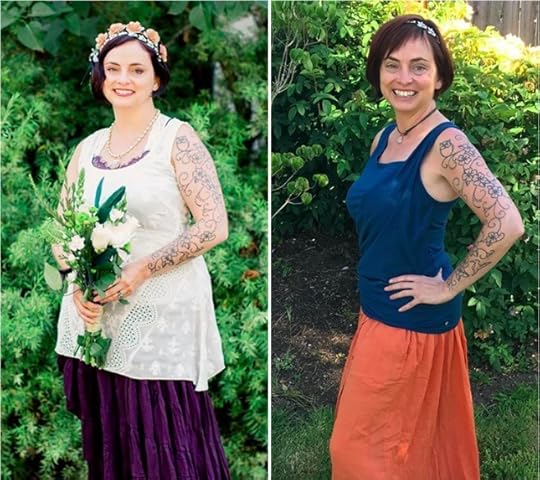
Ready to become one of the world’s most trusted, experienced and knowledgeable health coaches? Get certified as a Primal Health Coach.
Establish clout. Elevate your career. Enrich your knowledge… with the only comprehensive ancestral health certification program in existence.
Want to make fat loss easier?
Try the Definitive Guide for Troubleshooting Weight Loss for free here.
The post My Energy Is Back, My Brain Isn’t Foggy, and All of My Health Markers Have Improved appeared first on Mark's Daily Apple.



My Energy is Back, My Brain Isn’t Foggy, and All of My Health Markers Have Improved.
It’s Friday, everyone! And that means another Primal Blueprint Real Life Story from a Mark’s Daily Apple reader. If you have your own success story and would like to share it with me and the Mark’s Daily Apple community please contact me here. I’ll continue to publish these each Friday as long as they keep coming in. Thank you for reading!
 From the time I was fourteen, I remember being fascinated by the impact food seems to have on a person’s health. I think it started when my best friend and I were watching a news program while we waited for our favorite show to start, and we heard the newest research suggesting that we should limit certain foods in our diet. My friend and I wondered if we could live without pepperoni pizza, and it became a challenge. I often find myself wondering if she ever began eating red meat again.
From the time I was fourteen, I remember being fascinated by the impact food seems to have on a person’s health. I think it started when my best friend and I were watching a news program while we waited for our favorite show to start, and we heard the newest research suggesting that we should limit certain foods in our diet. My friend and I wondered if we could live without pepperoni pizza, and it became a challenge. I often find myself wondering if she ever began eating red meat again.
As I went through the early years of college, I followed the low-fat/high-carb life of the time, and I exercised aerobically. I cannot fathom how much cereal l consumed. In spite of really trying to apply the prevailing health advice, I had gained the dreaded freshman fifteen then expanded from there as the years passed.
I vividly remember the day, toward the completion of my undergraduate degree, that my mother told me she had been diagnosed with cancer. We were all afraid. Her prognosis was very positive, but nothing had prepared me for facing this kind of reality, or to help her face that reality. I dove into research for alternative medicine, and again found myself drawn to nutrition. I wasn’t an athlete, but I was active, and I knew movement needed to be a part of my lifestyle. I’ve always believed one must lead by example, so I made changes, started taking supplements and really committed to become as healthy as I possibly could.
My mother’s cancer went into remission, and I finished my undergraduate degree, began teaching tai chi and Kung fu, and worked two other jobs. I went to graduate school and ultimately became a school psychologist. As I navigated the politics of teaching, two jobs and eventually graduate school, feeding myself well became more and more important. I was strong, I was doing everything right, and I felt helpless to change my health.
 I finished my internship in the Alaskan bush, moved to Oregon, got my first real job, and got married all in the same year. My mother’s cancer returned the following year but her outcome, this time, threw me into a new chapter of my life. One which required that I forge ahead without her.
I finished my internship in the Alaskan bush, moved to Oregon, got my first real job, and got married all in the same year. My mother’s cancer returned the following year but her outcome, this time, threw me into a new chapter of my life. One which required that I forge ahead without her.
I began gaining weight, again, but this time when I attempted to take the weight off, low-carbohydrate diets had become big news. I switched to whole grains. I started eating meat again. In fact, I ate lots of protein and religiously counted every single carb. Finally, I experienced success.
I maintained my healthy weight for the better part of the next decade before something mysteriously began to change. I started gaining weight, and lots of it, but my diet hadn’t changed. Everything was suspected and thoroughly tested, and while some symptoms were eased, answers were never really found.
About a year and a half ago, I met Audrey when I hired her as a personal trainer at the local fitness club. She’s a twenty-something, and I’m not, but in spite of an age difference, I respected that she could tailor my workouts to how I was feeling that day. I couldn’t predict when I would be exhausted, or congested… or exactly the opposite of that and could knock out a really great workout. Hard as I worked, and as carefully as I ate, I found that once again, I couldn’t lose the weight.
After some routine tests, my doctor required that I begin to check my blood sugars, as I had become pre-diabetic… and she told me to stop eating grain. I was surprised and began researching why I had been given this advice. I started to notice that my glucose tested the highest levels after eating wheat. I’m a bit more tenacious than many, and during an appointment with an allergist, we decided to test for Celiac Disease. The doctor resisted at first, but eventually marked the boxes on the form. Two weeks later, to the surprise of both of us, I had a diagnosis of Celiac Disease.
Game on!
Some people make changes in increments. Others make big changes quickly once the information is there, and I am definitely one of them. My kitchen was gluten and grain free within days. My desire for more information has been matched only by my desire to feel better… and I do. Somewhere along the way, I read The Primal Blueprint. In the land of Primal/paleo, the Blueprint presented an approach that seemed to fit into my life very naturally. I began losing weight. In the past year, I’ve lost all of the thirty pounds I had gained. More importantly, my energy is back. My brain isn’t foggy. I sleep more soundly and feel rested most mornings. I am no longer pre-diabetic, and all of my health markers have improved.
Audrey was amazed at how efficiently I could train once I was fat-adapted, and how much more predictable my energy levels were. So much so that she changed her eating for twenty-one days as an experiment. As an athletic, personal trainer and coach of a college women’s soccer team, she was surprised to lose body fat and by how much more energy she had. She was sold.
 The more my body changed the more I wanted to learn, and so I enrolled in the Primal Health Coaching Certification program. Now that I’m a certified coach, Audrey and I have set out on our own. We work with our clients as a team. Each of us building their confidence in their abilities to meet their goals and make life changes. We work toward building a community that focuses on movement, play and enjoying real (Primal) foods. Audrey and I represent a broad range of ages and fitness levels. We have been there. We have done that.
The more my body changed the more I wanted to learn, and so I enrolled in the Primal Health Coaching Certification program. Now that I’m a certified coach, Audrey and I have set out on our own. We work with our clients as a team. Each of us building their confidence in their abilities to meet their goals and make life changes. We work toward building a community that focuses on movement, play and enjoying real (Primal) foods. Audrey and I represent a broad range of ages and fitness levels. We have been there. We have done that.
It brings me so much joy to see our clients astonish themselves with what they are capable of doing and how good they are capable of feeling. The beauty of “choosing a lifestyle,” rather than “living with disease” cannot be overstated. After feeling unhealthy for far too long, I feel empowered by the ability to choose health. My goal is to help all of our clients develop this sense of empowerment.
Audrey and I call ourselves GRAX. One of our very first clients saw the silhouette of Grok on some of the Primal Blueprint materials, but she thought that it should be a paleo woman, rather than a man. She named her archetype Grak. There is a sparkle in her eyes, and a playfulness is revealed every time she thinks of herself as becoming the powerful huntress Grak. Audrey and I smile every time we see it. So, we played around with the spelling a bit as we established our name.
We want our clients to define what “optimal health” means to them, and then we stick with them as they create that life. We work through different platforms including virtual or face-to-face and in groups depending on the proximity and needs of our clients. As we continue building our community, we look forward to the opportunity to invite you to a GRAX life, and the best version of you.
Would you like to be coached by Primal Health Coach Andrea Boyer? Email her here to express your interest.

Ready to become one of the world’s most trusted, experienced and knowledgeable health coaches? Get certified as a Primal Health Coach.
Establish clout. Elevate your career. Enrich your knowledge… with the only comprehensive ancestral health certification program in existence.
Want to make fat loss easier?
Try the Definitive Guide for Troubleshooting Weight Loss for free here.
The post My Energy is Back, My Brain Isn’t Foggy, and All of My Health Markers Have Improved. appeared first on Mark's Daily Apple.



The First Primal Kitchen Restaurant Opens Next Friday!
 Well, I have to say it’s a great birthday gift (yup, today’s that day for me), and I couldn’t be more excited about the news. The Primal Kitchen Restaurants vision was born a few years ago, and today I’m proud to announce that the very first location in South Bend, IN, will open in one week—next Friday, July 21, 2017.
Well, I have to say it’s a great birthday gift (yup, today’s that day for me), and I couldn’t be more excited about the news. The Primal Kitchen Restaurants vision was born a few years ago, and today I’m proud to announce that the very first location in South Bend, IN, will open in one week—next Friday, July 21, 2017.
I’ve got another great success story coming up in just a few, but I couldn’t let the morning pass without making the big announcement. Congratulations and thank you to our South Bend, IN, franchise owners, Tara and Tom Olson and to all the Primal Kitchen Restaurant staff. Check back next week for their success story, and get to know Tara and Tom’s own Primal journey. In the meantime, you can follow the South Bend restaurant on Facebook and Instagram for all the latest.
Also, be sure to check out the Primal Kitchen Restaurants website as well as follow the PKR Facebook page and Instagram for updates on ALL 7 of our upcoming franchise openings.
Thanks, everybody, and enjoy your day. I know I will!
The post The First Primal Kitchen Restaurant Opens Next Friday! appeared first on Mark's Daily Apple.



July 13, 2017
CrossFit’s Criticism: How Do I Eat Enough Calories on Primal?
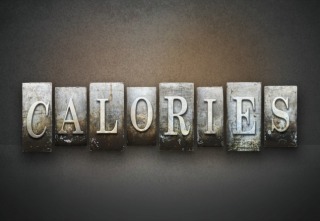 One of the reasons CrossFit tends to produce excellent physiques in both men and women is that it forces you to do everything. You’re lifting heavy, sprinting, going long and slow sometimes, going short and intense. You’re tapping into every energy system and stimulating anabolic pathways. It’s a recipe for fat loss and muscle gain.
One of the reasons CrossFit tends to produce excellent physiques in both men and women is that it forces you to do everything. You’re lifting heavy, sprinting, going long and slow sometimes, going short and intense. You’re tapping into every energy system and stimulating anabolic pathways. It’s a recipe for fat loss and muscle gain.
If you eat enough to support your activity levels, that is.
Historically, that’s been the big knock against paleo by CrossFitters: It’s too satiating a diet. The food you eat is so nutrient-dense that you end up eating fewer calories than you need to maintain the activity. What makes paleo so great for weight loss—inadvertent calorie reduction—makes it tough for CrossFit.
One argument is that this is exactly the point. CrossFit is too demanding, and if you can’t keep it up on a paleo diet—arguably the diet to which our bodies are best adapted—there’s something wrong with the training. Maybe so. Maybe CrossFit does ask too much of you. But that’s what humans do. We push boundaries. We seek new heights. We elevate and innovate. It’s what built this civilization, and it’s what drives people to endure great physical discomfort in the gym, on the field, or on the track.
Criticize it all you want, but it’s not going anywhere. I’m glad for that. Breaking boundaries is kinda what makes us great.
But it can be intense. Research indicates that the average CrossFit WOD burns about 20 calories per minute (for men) and 12.5 calories per minute (for women).
Calories burned don’t provide the whole story. Replacing energy expended is one thing. Building new tissue is another. While a slogging jog around the block burns calories, it triggers an insignificant amount of muscle protein synthesis. To increase protein demands, you need to lift something.
A CrossFit workout burns calories and it increases muscle protein synthesis—two conditions that increase calorie requirements.
Where does the Primal Blueprint eating plan fit in? How can it account for the increased energy demands of CrossFit?
On paper, I think everyone understands the potential for going Primal while a CrossFitter.
You eat more calories and micronutrients. Whereas a typical gym rat might have a post-workout shake with waxy maize, egg whites, and skim milk, a Primal post workout meal might include baked potato, seared sockeye salmon, and a glass of whole milk. Similar calories counts, vastly differently nutrient profiles. Those extra nutrients will assist in performance and recovery.
But you have to eat them.
How Can You Make Sure to Eat Enough on Primal?
Eat Breakfast
Breakfast sets the stage for optimal eating the rest of the day. Now, I’ll often skip breakfast, but I’m not trying to support a CF schedule. I’m not trying to gain weight. Skipping breakfast is skipping a great opportunity put more food in your body.
If you are a dedicated early morning class participant, you can work out fasted but make sure you eat enough the night before and be sure to eat breakfast soon after, even if you aren’t famished. These workouts can a suppress appetite for a few hours. While that’s great if you are looking to lose fat, to reach peak performance and aid in recovery you need to eat.
Eat Faster
This flies in the face of my usual advice to savor your food, linger at the table, and make a meal a drawn-out event. There are times and places for that kind of eating, but it’s not conducive to getting enough calories. Studies show that people who eat breakfast faster get hungrier sooner, an effect not mediated by changes to appetite hormones. It just happens. Go with it.
Eat Calories First, Micronutrients Second
Prioritize the foods that provide the most calories, then eat the lighter fare. Don’t eat a cup of steamed spinach, for example, then your steak and sweet potatoes. The spinach has satiety-inducing compounds but very few calories; many low-calorie, high-nutrient plant foods are similar in this respect.
Eat More Carbs
Low-carb, high-fat dieting is probably the most effective way to inadvertently reduce calories. That is, people eating that way just tend to eat less food without trying. Eat more Primal sources of carbs should increase your appetite—or at least stop suppressing it—and allow you to excel in your training. Since your carb requirements have gone up doing CrossFit, this shouldn’t be a problem.
Add Fat to Your Food
Gram for gram, fat contains the most calories of all the macronutrients. I’d advise adding nutrient-dense fat sources to your meals, like egg yolks, grass-fed butter, bone marrow, cheese, avocados (and their oil), olives (and their oil), and nuts/seeds.
Make Sure You’re Not Actually Strict Paleo
Primal is far more flexible than strict paleo, allowing calorie-dense foods like dairy, white rice, white potatoes, and even legumes. We also promote the consumption of fatty meats, which are higher in calories than the leaner meats promoted by the earliest versions of paleo.
Get Fish Sauce
Real fish sauce—the stuff made by fermenting salted fish—is a potent source of glutamate, the flavor-enhancing amino acid also found in MSG. Glutamate is a powerful amino acid, despite its bad reputation. You can use it to teach picky eaters to like novel foods. You can add it to almost any savory food to boost the umami flavor and enhance the entire eating experience. And it can help increase appetite and improve digestion.
Before you enact those changes, first make sure you truly do need more calories. There are some tell-tale signs that you’re not getting enough calories, beyond the typical ones like poor performance and harder recovery. (You can consider using a TDEE calculator if you feel you need to. There are a lot of them out there these days. Eat to Perform is one that caters to CrossFitting, and it’s free.)
Signs You Need to Take in More Calories
Female Athlete Triad
Female CrossFitters are at risk for the dreaded “female athlete triad.” When women combine heavy, intense training with undereating, they may develop the “female athlete triad“: disordered eating (ultra low calories), osteoporosis, amenorrhea. If all that sounds extreme, it is but it isn’t; the triad is shockingly common among adolescent and young adult female athletes.
Also, the triad exists on a spectrum. You may not be breaking hips and losing your fertility outright, but you could be weakening your bones and skipping periods. These are all warning signs.
Male athletes are at risk, too. Not for the missing periods, but for the other stuff.
Slower Recovery from Sprains and Pulls
It’s common knowledge that undereating impairs your ability to bounce back from workouts. Extreme low calorie intake also inhibits collagen synthesis, a crucial step toward healing connective tissue after a strain.
Fewer Gains
Calorie restriction lowers testosterone, sexual impulses, and attraction to otherwise fetching females (albeit rodent females). Human calorie-restricted males also have lower testosterone. This tanks your ability to recover from exercise, let alone actively make gains. And remember, women need testosterone to make gains, too.
Worse Sleep
While we sleep, If we’re trying to maintain a heavy CrossFit schedule while undereating, our stress hormones will be high, our blood sugar will be all over the place, and our liver glycogen will be low. Our livers are supposed to release glycogen as needed to keep blood sugar stable while we sleep. If they don’t have enough glycogen, your body releases stress hormones to convert protein into glucose. That shot of adrenaline solves the blood sugar issue, but it also tends to wake you up, or at least disturb the quality of your sleep.
Fat Gain, Especially in the Belly
When your calories get too low, cortisol – one of the main stress hormones – goes up. Chronic elevation of cortisol, as you probably know, is strongly associated with abdominal fat.
If any of those symptoms check out, and you do need to eat more calories, Primal is a great way to make it work.
Thanks for reading, everyone. Take care and stay tuned for the rest of the series.
Want to make fat loss easier?
Try the Definitive Guide for Troubleshooting Weight Loss for free here.
The post CrossFit’s Criticism: How Do I Eat Enough Calories on Primal? appeared first on Mark's Daily Apple.



July 12, 2017
Need to Know Factors for Bone Health
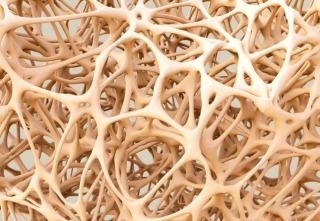 At the heart of every building is its framework. That latticework of timber, concrete or steel is what holds the entire structure up. Without it, there’d be no building at all. I think of that phrase some people use when they look at a house and declare, “It’s got good bones.”
At the heart of every building is its framework. That latticework of timber, concrete or steel is what holds the entire structure up. Without it, there’d be no building at all. I think of that phrase some people use when they look at a house and declare, “It’s got good bones.”
Considering how essential bones are to our existence, it’s surprising how most people take them for granted. A lifetime of neglect can suddenly reveal to us just how sensitive and integral this living framework is. Yet, there’s so much more to this truth than we commonly assume.
Sure, the skeletal system provides the stable foundation upon which our muscles, organs and fascia are constructed. But that’s just the half of it. Bones also secrete hormones, interact directly with the brain (ever heard of the bone-brain axis?) as well as other organs and fat cells, and even play a key role in immunity. I’ve covered many of the basics of bone health before, and I’d definitely recommend checking those out to augment these suggestions. For today, however, let’s look at some of these lesser known and appreciated functions—as well as some additional tips for supporting bone health throughout the life cycle.
Bones Play a Hormonal Role
While their primary purpose is structural support, in many ways, bones actually behave similarly to glands.
An interesting article posted a few months back in Nature demonstrated just how in tune our bones are with the rest of the body. Researchers showed that, contrary to the view of bones as inert organs, they’re actually in continual communication with the brain, kidneys, pancreas, fat cells, and more via a group of hormonal messengers, including osteocalcin, sclerostin, fibroblast growth factor 23 and lipocalin 2.
Experiments showed that after mice eat their bones release liopcalin 2, which then travels to the brain. Here it sticks to appetite-regulating cells, signaling to the brain to stop chowing down. This means that our bones act as appetite-mediators, sending messengers that cross the blood-brain barrier to let the brain know that sufficient nutrients have been absorbed to keep the bone-building process going. Previous thought assumed fat cells were largely in charge of this task, but it appears bones actually produce 10 times more of this appetite-curbing hormone.
Osteocalcin, a hormone produced by bone-building osteoblasts, further helps to regulate blood sugar by telling the insulin-secreting cells in the pancreas to get cracking. Osteocalcin also communicates directly with fat cells to release a hormone that improves insulin sensitivity.
Beyond these critical functions, the osteocalcin produced by bones plays a key role in testosterone production and male fertility, helps regulate mood and memory, and even interacts with the brains of developing fetuses. An interesting side note…osteocalcin may also help improve endurance, with studies in mice showing that older mice were able to run almost twice as far after being injected with osteocalcin.
Capping things off nicely, continuing studies in mice indicate that the osteoblast-regulating hormone sclerostin plays a role in energy metabolism. When secreted from bones, sclerostin has been shown to increase energy expenditure by helping the body switch to ketogenesis.
What Probiotics Do for Bone Density
Studies in mice show that probiotic-treated mice retained their bone density even after ovary removal, compared to the control group that lost a whopping half of their bone density. Researchers just used your stock-standard Lactobacillus strains, commonly found in cultured dairy products such as yogurt and kefir.
A recent Chinese study confirmed that these findings also apply to humans, with the bone mineral density of diabetic patients increasing the more Lactobacillus and Bifidobacterium they were given. Eating and supplementing for a healthy biome is about far more than just the gut.
A Word about Exercise and Inflammation
Over the course of nine months, researchers monitored changes in the bone health and structure of female rowers training for the 2016 Olympic Games. The rowers were chosen due to their vigorous training regime (average of 18 hours per week). During the nine months, proponents noticed that protein precursors to bone loss increased significantly, along with the bone formation-inhibiting hormone sclerostin. This was exacerbated by increased inflammation in the bodies of the over-worked rowers, which contributed to higher counts of sclerostin.
The verdict? “Very intense training without adequate recovery period may lead to increased inflammation and subsequent bone resorption (loss).” The result is higher risk of bone stress injuries and early osteoporosis. Enough said.
Overtraining aside, exercise remains one of the leading ways to ensure optimum bone health into later decades.
Finally, there’s the role that exercise can play in reversing unfavorable genetics. According to research, 50-80% of bone density is predicated on genetics, with conditions such as brittle bone disease being passed on from mother to baby in the womb. Studies on mice indicate that higher myostatin is directly proportional to higher risk of bone disease. Exercise, in particular weightlifting or short high-intensity workouts, decrease levels of myostatin in the body and increase muscle mass.
Nutritional Considerations for Bone Health
On the subject of myostatin, increasing healthy fat consumption, particularly fats with MCTs, along with cutting out inflammatory foods like sugar and grains, also contributes to lowered myostatin levels. In addition, the catechins found in green tea have been shown to lower myostatin production and support healthy bone metabolism.
As for the dairy with bone health? One study examined the association of milk, yogurt, cheese, cream and vitamin D with bone mineral density in adults around the age of 75. Researchers found that milk, yogurt and cheese were protective against both hip and spinal bone loss…but only when participants also supplemented with vitamin D. Those who consumed the same amount and type of dairy, but didn’t get their daily dose of vitamin D, showed no positive correlation at all.
Another study, this time with a huge cohort of 5000+ old folks in Ireland, demonstrated that “each unit increase in yogurt intake in women was associated with a 31% lower risk of osteopenia and a 39% lower risk of osteoporosis. In men, a 52% lower risk of osteoporosis was found.” Given the findings regarding probiotics in the earlier noted study, there are likely a few factors in play here.
Also, one salient note: the researchers at the end of their study noted that vitamin D supplements were also associated with significantly reduced risk of bone complications in both men and women. But that’s not a surprise to anyone, is it?
Thanks for reading today, and offer up any questions or feedback below. Take care.
Want to make fat loss easier?
Try the Definitive Guide for Troubleshooting Weight Loss for free here.
The post Need to Know Factors for Bone Health appeared first on Mark's Daily Apple.



July 11, 2017
7 Relaxing Yoga Poses to Unwind
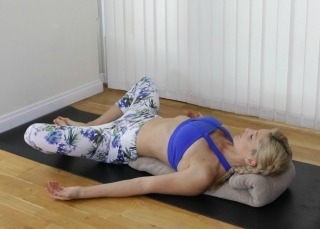 Today’s guest post is offered up by Jessica Gouthro of PaleoHacks.com. I feel like midsummer calls for some good R&R. Enjoy the chance to kick back and relax with her routine, everyone.
Today’s guest post is offered up by Jessica Gouthro of PaleoHacks.com. I feel like midsummer calls for some good R&R. Enjoy the chance to kick back and relax with her routine, everyone.
A simple restorative yoga practice can teach you to truly relax your body, tune in with your breath, and calm your stressed-out mind.
Restorative yoga uses props to aid in physical, mental, and emotional relaxation.
As you do these poses, keep in mind the goal is not to “work hard” like you might do in a traditional flow yoga class. The goal is to get comfortable, hold still, and allow your mind to slow down and the tension to release from all areas of your body.
In this practice, we’ll use a mat, a chair, and a rolled-up blanket for some moves, but you can also use a pillow or bolster in place of the blanket and/or the edge of your bed or couch in place of the chair.
If you are feeling stressed, give these 7 postures a try and feel the results for yourself.
Supported Child’s Pose

Kneel on your mat with your knees wide and feet touching.
Place the rolled up blanket underneath you, making sure it will be long enough to support your head when you lay forward.
Walk your hands out all the way and rest your head to one side on the blanket.
Sit your hips back all the way toward your heels and get comfortable.
Breathe deeply as you relax into the posture.
Hold Supported Child’s Pose for about 1 minute.
Kneeling Twist

Kneel on your mat in an all-fours position.
Thread one arm through the middle and twist your torso until you can place that shoulder on the ground.
Press into the floor with the opposite hand to exaggerate the twist.
Breathe and relax.
Hold this Kneeling Twist for 30 seconds, then switch to the other side and hold for another 30 seconds.
Supported Relaxed Plow

Lie on your back.
Kick your legs up and over into a plow position.
Support your lower back with your hands.
Relax your legs, allowing your knees to bend comfortably down by your ears.
Breathe and relax.
Hold Supported Relaxed Plow for about 30 seconds.
Seated Wide Leg Supported Forward Fold

Sit in front of your chair (or bed or couch) and stretch your legs out wide to the sides.
Lean forward and place your forearms on the edge of the chair with your forehead resting on top of your arms.
Relax your feet and legs and just get comfortable with the stretch.
If this feels like too much stretch, you may bend your knees.
Breathe deeply and relax.
Hold Seated Wide Leg Supported Forward Fold for about 30 seconds.
Legs Elevated Resting Pose
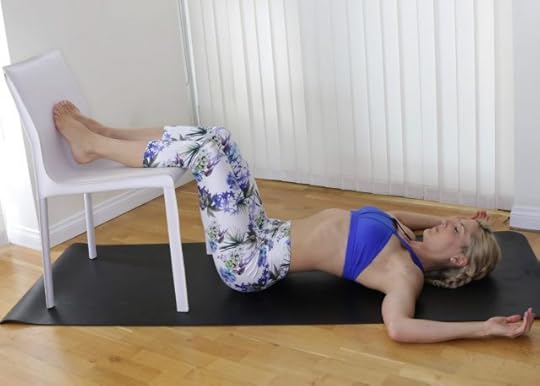
Lie on your back with your butt very close to the front of the chair (or bed or couch).
Place your legs on top of the chair so that knees are bent at a 90-degree angle.
Lift your arms up for a goal post shape, with the backs of your hands rested on the ground.
Ensure that your shoulder blades are tucked flat on the ground and chest is lifted to attain the most restful position. There should be a natural curve in your lower back.
Breathe deep and relax into the posture.
Hold Legs Elevated Resting Pose for about 1 minute.
Resting Butterfly
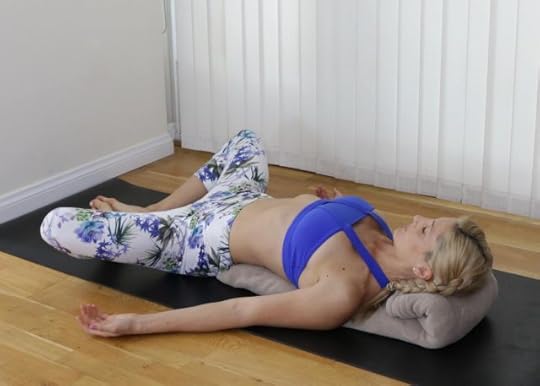
Sit on your mat, placing your rolled-up blanket at the base of your spine and stretching out behind you.
Put the soles of your feet together with knees wide to form a “butterfly” shape with your legs.
Lie back and fold the top of the blanket over again to create a small pillow for your head to rest.
Stretch your arms out to the sides with palms facing up.
Breathe deeply and relax into the posture, allowing your knees to fall towards the ground comfortably.
Hold Resting Butterfly for about 1 minute.
Savasana

Lie flat on your back with legs extended and arms by your sides.
Adjust your shoulders and hips until your find a comfortable resting position. Allow a natural curve in your spine.
Hold Savasana for about 1 minute.
These poses are incredibly restorative and effective for reducing stress, calming the nervous system and allowing us to unwind after a busy day.
Hold the postures as long as you like or repeat the sequence more than one time.
I hope you will return to this practice next time you feel stressed and share what you’ve learned with anyone needing to unwind in a healthy way.
Thanks again to Jessica Gouthro from PaleoHacks.com for the great restorative routine today. Questions, comments, suggestions for more stress (or de-stress) related topic on MDA? Share them on the comment board, and thanks for reading today, everybody.
Want to make fat loss easier?
Try the Definitive Guide for Troubleshooting Weight Loss for free here.
The post 7 Relaxing Yoga Poses to Unwind appeared first on Mark's Daily Apple.



July 10, 2017
Dear Mark: CrossFit and Carb Questions
 For today’s edition of Dear Mark, I’m answering questions from the comment section of last Thursday’s post on CrossFit, Primal, and carbs. First, I use a comment from Dave to expand on the idea of earning your carbs and eating the carbs you earn. Second, I discuss the notion of athletes using cyclical low-carb diets. Would their performance suffer? And finally, I go over a few more starchy carb sources allowed on the Primal eating plan that I forgot to mention last time.
For today’s edition of Dear Mark, I’m answering questions from the comment section of last Thursday’s post on CrossFit, Primal, and carbs. First, I use a comment from Dave to expand on the idea of earning your carbs and eating the carbs you earn. Second, I discuss the notion of athletes using cyclical low-carb diets. Would their performance suffer? And finally, I go over a few more starchy carb sources allowed on the Primal eating plan that I forgot to mention last time.
Let’s go.
Dave mentions:
My only issue is that after a lifetime of being overweight my initial instinct is always to restrict carbs when in fact I know that I need more.
Dave, your comment reminded me of something I meant to discuss.
Everyone’s familiar with the idea of “earning your carbs.” If you’re going to eat a lot of carbs, you should earn them by depleting glycogen. Other ways to earn carbs include getting pregnant, being pregnant, and breastfeeding. There’s a subtle flip-side to that, which few realize: If you earn the carbs, eat the carbs.
Folks who kill themselves in the gym, then ignore their bodies’ request for dietary glucose aren’t doing themselves any favors. I love gluconeogenesis as much as the next guy, but if gluconeogenesis can’t keep up with your carb demands—and CrossFit WODs create quite a demand—you should eat some carbs. Refusing to eat carbs when your depleted muscles are screaming for more creates a stress response. That means cortisol, which triggers gluconeogenesis and in excess, blunts fat loss, opposes testosterone, and promotes belly fat accumulation.
Less fat loss is bad for obvious reasons. Almost everyone in this fitness/diet game came because they wanted to lose weight, which really means they wanted to lose body fat. Chronic high cortisol is terrible for that.
Less testosterone is bad for fitness and physique gains. That goes for men and women, by the way.
Belly fat is terrible for your health. Adipose tissue is an endocrine organ in its own right, and belly fat secretes large amounts of IL-6, an inflammatory cytokine strongly correlated with systemic inflammation.
Some worry about the insulin response. I don’t blame you. Hyperinsulinemia and insulin resistance are major issues in the modern world. Most people should be trying to limit insulin. But if you time your carb intake right, and you’ve just trained hard, you won’t even need very much insulin to shuttle that glucose into those muscles. You’ll trigger a little pathway called non-insulin dependent glucose uptake, leaving your body free to liberate stored body fat as needed. See how things work out when you earn your carbs then eat them?
Joe wonders:
I’d like to know if someone is fat adapted and employs a cyclical or targeted ketogenic diet can get the same or better results doing competitive crossfit as someone who eats a high carb diet. Any thoughts?
I doubt you’ll see any top Games competitors going cyclical keto. It might work. They just probably wouldn’t take the chance.
That said, I think it could work if you were meticulous about it. And I know that fat-adaptation is going to help any athlete. Everyone can benefit from wringing as much intensity as they can out of fat-burning. Everyone benefits from having a little more glycogen saved for the end.
There was the study I referenced last week where elite walking athletes either went low-carb/high-fat, high-carb/low-fat, or cycled low-carb and high-fat. Both the high-carb and cyclic low-carb groups beat the low-carb group. So clearly cyclic can work, at least for elite race walking. That’s not CrossFit, but it’s the best we have to go on.
Let’s keep a few things in mind when analyzing this study.
The low-carb, high-fat athletes lost a lot of weight. They didn’t set out to lose weight. They were already lean and healthy—elite athletes, remember? When the obese lose weight, performance improves. They’ve got extra weight to lose. When the fit and lean lose weight, performance often suffers. They don’t have anything to lose, so lost weight probably comes from muscle. Allowing ad-lib eating rather than isocaloric eating, as happens in real life, could have prevented the weight loss. Alternatively, the researchers could have added calories to the low-carb group to avoid weight loss.
The study ran for 3 weeks. Three weeks is the bare minimum for an athlete to become keto-adapted. I’d like to see this same study extended for a few more months, allowing optimal adaptation to the diet.
Yet the cyclical low-carb group did just as well as the high-carb group.
Marge mentions:
There are so many more primal sources of high-carb, high-energy foods than are mentioned here… Don’t forget winter squash, turnips, parsnips, beets, plantains… And if you need calorie-density, fry starchy things such as potatoes and plantains in bacon fat til they are crispy! Delicious, nutrient-dense, and sustaining fuel! Use your food imagination!
Yeah, I forgot a few. Thanks for the reminder. I’ll go over the ones you mention, then maybe add them back to the original post.
Winter squash. Underrated. These are the perfect starch source for the person who’s still not quite sure about eating more carbs. A cup of cubed butternut squash contains 16 grams of carbohydrates. Compare that to a cup of cubed sweet potato with 27 grams, or a cup of diced white potato with 28 grams. Winter squash also tends to be a good source of magnesium, potassium, and manganese.
Beets. A cup of beets contains around 13 grams of carbs, mostly sugar. About half of sugar ends up refilling liver glycogen, with the rest being available to muscle glycogen, so beets are fair sources of carbs for athletes. Beets are also good source of potassium, manganese, and folate. Most importantly for athletes, beets have a ton of nitrate, which can boost nitric oxide production and improve endothelial function and blood flow, and improve athletic performance:
Improved running performance during a 5k.
Improved performance during 2000m row.
Increased cardiovascular efficiency.
Not bad, right?
Parsnips. A cup gives you almost 24 grams of carbs, plus a good dose of magnesium, potassium, manganese, and folate.
Turnips don’t make the cut. They’re perfectly good to eat, just not as a reliable source of starchy carbohydrate.
That’s it for today, folks. Thanks for reading, and keep the questions coming!
The post Dear Mark: CrossFit and Carb Questions appeared first on Mark's Daily Apple.



July 9, 2017
Weekend Link Love – Edition 459
 RESEARCH OF THE WEEK
RESEARCH OF THE WEEKA fourth Denisovan appears.
Regular meditation helps athletes endure interval training.
“Edible” oils may partially explain the South Asian diabetes epidemic.
When autophagy slows, cellular aging accelerates.
Taking 5 kilograms of broccoli crammed into a single pill is great for a diabetic’s blood sugar numbers.
Our relationship to the Neanderthals just got even more complicated.
It doesn’t matter for muscle adaptations whether you take protein before or after your workout.
Ritalin use during childhood may have long-term effects on neurotransmitters.
NEW PRIMAL BLUEPRINT PODCASTS
 Episode 176: Mark Sisson and Derek Flanzraich: I chat with Derek Flanzraich, the founder of Greatist, one of the greatest (sorry) new media empires dedicated to healthy living.
Episode 176: Mark Sisson and Derek Flanzraich: I chat with Derek Flanzraich, the founder of Greatist, one of the greatest (sorry) new media empires dedicated to healthy living.
Each week, select Mark’s Daily Apple blog posts are prepared as Primal Blueprint Podcasts. Need to catch up on reading, but don’t have the time? Prefer to listen to articles while on the go? Check out the new blog post podcasts below, and subscribe to the Primal Blueprint Podcast here so you never miss an episode.
CrossFit’s Criticism: How Do I Eat Enough Carbs on Primal?
Hair Loss: Looking Beyond Genetics
Are CrossFit and Primal Compatible?
More on Adaptogens: Ashwagandha, Astragalus, and Holy Basil
INTERESTING BLOG POSTS
How drug companies wine and dine docs.
Steven Hamley’s take on the AHA’s advisory on fats.
MEDIA, SCHMEDIA
How will the Trump administration affect psychedelic research?
Spending just three days on a hunter-gatherer diet (with actual hunter-gatherers, the Hadza) has immense benefits for gut bacteria diversity.
EVERYTHING ELSE
An interesting podcast about running as a spiritual practice.
An evolutionary trade-off: short stature and worse arthritis for surviving an ice age.
A Western man discovers how feeble and immobile his body has become, then starts along the road to fix it.
Why ancient Roman concrete is still standing.
A new squat toilet, kind of.
You should side-roll, sit, balance, and crawl before you run.
THINGS I’M UP TO AND INTERESTED IN
Instagram account I’m really digging: Isaac Rochell, an LA Charger who’s transformed his body and health with a ketogenic diet.
Success story I’m loving: Joe DiBernardo. Joe is a former NFL linebacker who’s using Primal health and eating principles to improve his own health, grow his health coach business, and change the lives of his clients.
I’d love to flip through these (carefully, of course): The crumbling ancient texts that may contain life-saving cures.
Article I’m pondering: How smell links to memory, flavor, emotions, in excruciating detail.
Excuse the source: The benefits of beef against Alzheimer’s disease.
RECIPE CORNER
Grilled proscuitto-wrapped asparagus skewers are easy to make and really impress people.
If you’re making dessert and have a farmer’s market on hand, do peach cobbler.
TIME CAPSULE
One year ago (Jul 9– Jul 15)
12 Common Causes of Bloating (and How to Eliminate Them) – Or else you’ll eliminate your bloating the old-fashioned way.
How Much Meat is Too Much? – Is there an upper limit?
COMMENT OF THE WEEK
“My take-away from all the links is… eat lots of chocolate.”
– That’s often a safe take-away, KidPsych.

The post Weekend Link Love – Edition 459 appeared first on Mark's Daily Apple.



July 8, 2017
Primal Keto Bread
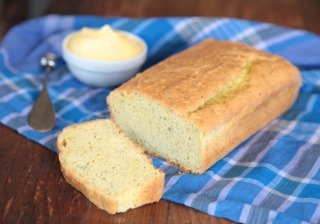 A slice of warm buttered bread can be hard to resist. When that slice is Primal keto bread, you don’t have to resist. Primal keto bread makes delicious toast and sandwiches a real possibility, whether you’re following a ketogenic diet or simply keeping things Primal.
A slice of warm buttered bread can be hard to resist. When that slice is Primal keto bread, you don’t have to resist. Primal keto bread makes delicious toast and sandwiches a real possibility, whether you’re following a ketogenic diet or simply keeping things Primal.
Before slicing into your first loaf of Primal keto bread (and it does slice beautifully) you should know that it isn’t going to taste exactly like “regular” bread. Keto bread is more similar to quick bread, with a soft almost cake-like texture and thin crust. The recipe here takes inspiration from recipes by Elana’s Pantry and Keto Connect, which both use almond flour and eggs as the main ingredients for keto bread.
This recipe is similar, but sets itself apart by producing a lighter loaf that isn’t too moist and spongy and isn’t too “eggy” tasting. The “eggy” flavor often associated with keto bread is toned down in this recipe by using fewer eggs and by adding bolder flavors like dried herbs, garlic and cheese, or (for the other variation) honey and cinnamon.
This honey and cinnamon keto bread is especially hard to resist. Toasted with butter, it’s a breakfast that both kids and adults will love. The garlic, dill & cheddar Primal keto bread is a savory treat, perfect for a BLT or turkey sandwich.
Keto bread is easy to make. But before you bake your first loaf, read all the way through the recipe, as it includes many tips that will ensure your loaf turns out perfectly.
Time in the Kitchen: 15 minutes, plus 30 minutes to bake
Servings: 10 to 12 slices
Cinnamon & Honey Keto Bread
Ingredients

1 ½ cups blanched almond flour (165 g)
4 large eggs, separated
1 tablespoon egg white protein powder (5 g)
5 tablespoons unsalted butter, melted (70 g)
¼ teaspoon kosher salt (1.2 ml)
3 teaspoons aluminum-free baking powder (15 ml)
1 ½ teaspoons cinnamon (7 ml)
1 tablespoon honey (15 ml)
¼ teaspoon cream of tartar (1.2 ml)
Garlic, Dill & Cheddar Keto Bread
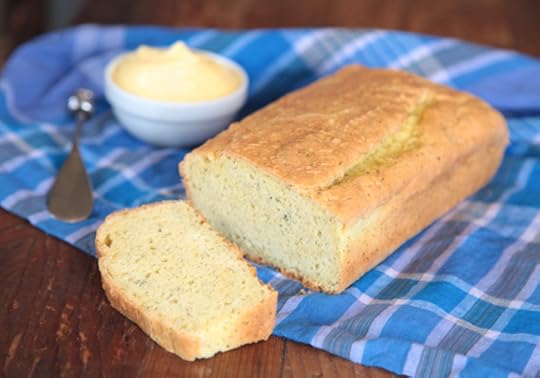
Ingredients
1 ½ cups blanched almond flour (165 g)
4 large eggs, separated
1 tablespoon egg white protein powder (5 g)
5 tablespoons unsalted butter, melted and cooled (70 g)
¼ teaspoon kosher salt (1.2 ml)
3 teaspoons aluminum-free baking powder (15 ml)
¼ teaspoon cream of tartar (1.2 ml)
1 teaspoon garlic powder (5 ml)
1 teaspoon dried dill (5 ml)
1 cup grated cheddar cheese (90g)
Instructions

Preheat oven to 375º F/190º C.
Lightly grease an 8.5 x 4.5 loaf pan. For easiest release, cover the bottom of the loaf pan with lightly greased parchment paper.
In a food processor, combine the almond flour, egg yolks, egg white protein powder, butter, salt and baking powder.
*If making cinnamon & honey bread, add the cinnamon and honey.
*If making garlic, dill & cheddar bread, add the garlic powder, dill and cheddar.
Process just until the ingredients come together into a ball of dough.
In the bowl of an electric mixer, combine the egg whites and cream of tartar. Using the whisk attachment, whisk until the egg whites are big and fluffy and soft peaks form (when the whisk is lifted out of the egg whites, a soft peak should form, then fall slightly).
Pour 1/3 of the egg whites into the food processor. Pulse until combined, scraping down the sides as needed. Add another 1/3 of the egg whites, and pulse again until combined into a wet batter.

Scrape the dough out of the food processor into the bowl with the remaining egg whites. Use a spatula to gently fold the egg whites into the dough. Gently fold and mix until there are no white streaks, but be gentle; the air in the egg whites helps the dough rise into a loaf with a light texture.
Scrape the batter into the loaf pan. Bake 30 minutes.
Let cool for at least 30 minutes before removing from the loaf pan. Try to let the loaf cool completely on a wire rack before slicing.
Primal keto bread keeps for 1 to 2 days on the counter with simply a light towel over the top of it. For longer storage (3 to 5 days), keep the keto bread wrapped lightly in a towel inside a sealed plastic bag in the refrigerator.
Recipe Notes
This recipe was developed using Blue Diamond blanched almond flour. Other brands are fine, too, but might yield slightly different results.
Egg white protein powder is used to add more protein but also to help the bread rise into a fluffy loaf.
Cream of tartar helps make egg whites fluffy and airy and makes them less likely to deflate in the oven.
If the baking powder is aluminum–free (it usually says so on the front of the can), your baked goods won’t have a strange metallic flavor. Another reason to use aluminum-free: baking powder with aluminum can give baked goods a grayish color if the recipe includes an acidic ingredient.
The recipes above can be altered by adding different flavors. Any type of dried herb or spice can be used. Omitting the cheese is fine; it won’t change the texture of the bread. Add more honey if you like, vanilla extract, or a pinch of cardamom.

The post Primal Keto Bread appeared first on Mark's Daily Apple.



Mark Sisson's Blog
- Mark Sisson's profile
- 199 followers




